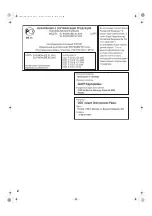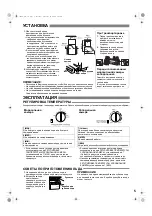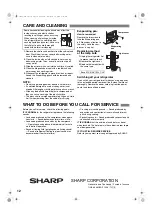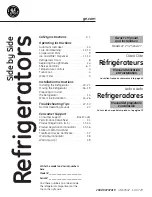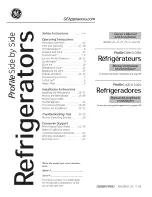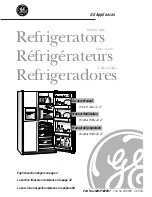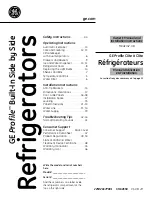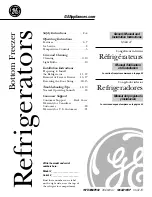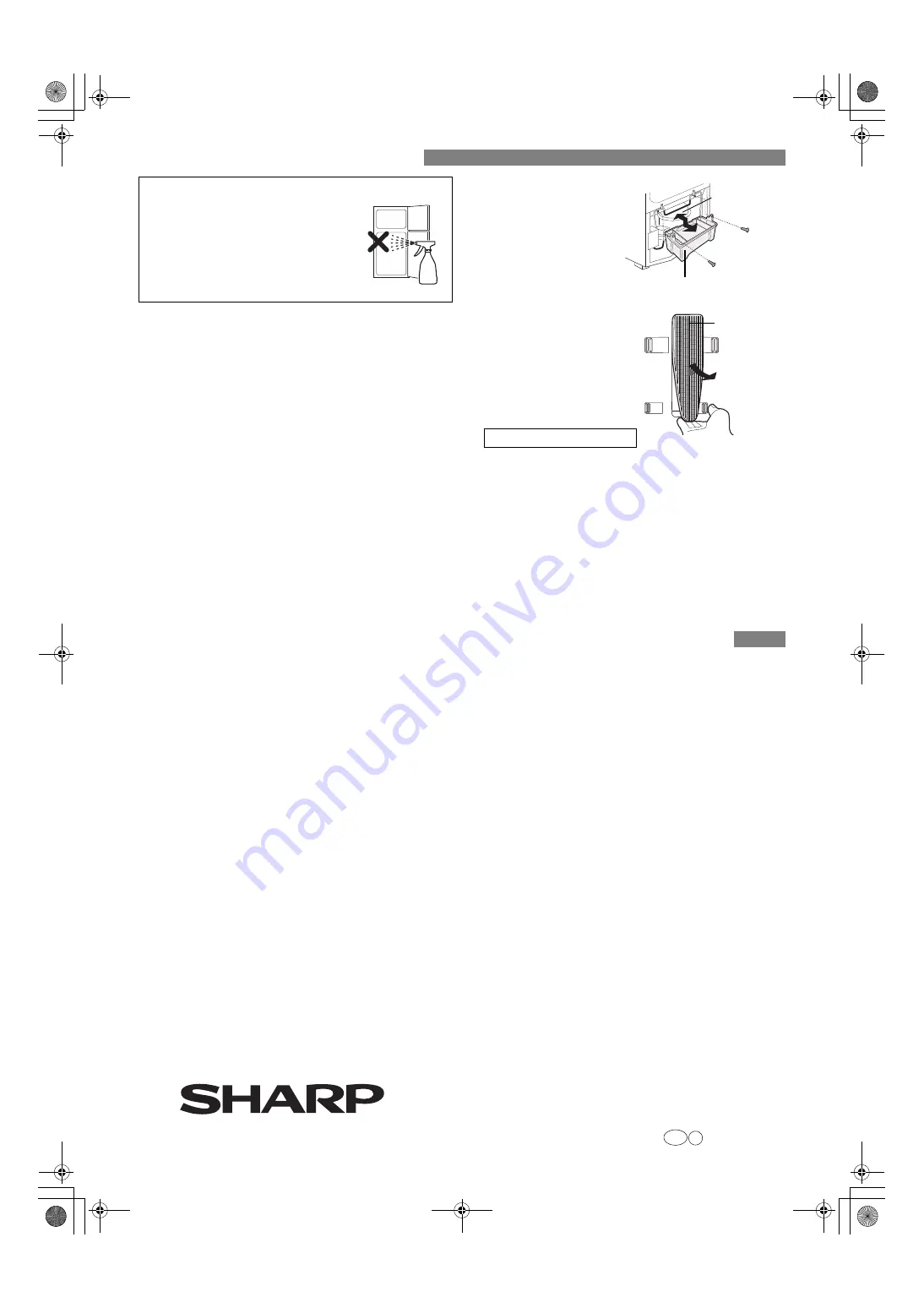
13
CARE AND CLEANING
Some household cleaning chemicals may affect the
inside surfaces and plastic shelves
resulting in splitting or cracks occurring.
When cleaning all plastic parts inside
this refrigerator, only use diluted dish-
washing liquid (soapy water). Make sure
that all plastic parts are thoroughly
rinsed with water after cleaning.
1.
Remove the shelves and pockets from the cabinet and
door. Wash them in warm soapy dishwashing water;
rinse in clean water and dry.
2.
Clean the inside with a cloth soaked in warm soapy
dishwashing water. Then, use cold water to wipe off
soapy water.
3.
Wipe the exterior with a soft cloth each time it is soiled.
4.
Clean the Magnetic door seal with a toothbrush and
warm soapy dishwashing water.
5.
Whenever the refrigerator is moved to clean or reposi-
tioned, the Evaporating pan should be removed and
cleaned.
NOTE:
•
Do not use polishing powder, benzine, hot water etc.
•
If undiluted detergent is used or soapy water is not
wiped off thoroughly, cracking of plastic parts can result.
•
Wipe any food oils adhered to plastic components as
they can cause cracking of the plastic surface.
•
The glass shelves weigh approximately 2kg each. Hold
firmly when removing from the cabinet or carrying.
Evaporating pan;
How to remove/set
Remove the two screws to
take the Evaporating pan
off. Please pay attention to
the safety since the com-
pressor is very hot.
Replacing method
of the lamp bulb
1.
Unplug the refrigerator first
to prevent electric shock.
2.
Remove the Light cover.
3.
Replace the lamp bulb with
the same type.
Base E12, MAX 15W, T-20
Switching off your refrigerator
If you switch your refrigerator off when you are going away
for an extended period, remove all food, clean the interior
thoroughly. Remove the power cord plug from the power
socket and leave all doors open.
WHAT TO DO BEFORE YOU CALL FOR SERVICE
Before you call for service, check the following points.
IT IS NORMAL
for the refrigerator to produce the following
sounds.
•
Loud noise produced by the compressor when opera-
tion starts --- Sound becomes quieter after a while.
•
Loud noise produced once a day by the compressor
--- Operating sound produced immediately after auto-
matic defrost operation.
•
Sound of flowing fluid (gurgling sound, fizzing sound)
--- Sound of refrigerant flowing in pipes (sound may
become louder from time to time).
•
Cracking or crunching sound --- Sound produced by
expansion and contraction of inner walls and internal
parts during cooling.
•
Squeaking sound --- Sound produced by expansion and
contraction of internal parts.
IT IS NORMAL
that the outside of a cabinet may be hot
when touched. The hot pipe is in the cabinet in order to pre-
vent dew generation.
IF YOU STILL REQUIRE SERVICE
Refer to your nearest service agent approved by SHARP.
Compressor
Evaporating
pan
Light cover
SHARP CORPORATION
TINS-A986CBRZ 10KK TH 3
Напечатано
в
Таиланде
/
Printed in Thailand
12
(A986)_ENG-3版.fm Page 13 Thursday, September 16, 2010 4:42 PM


